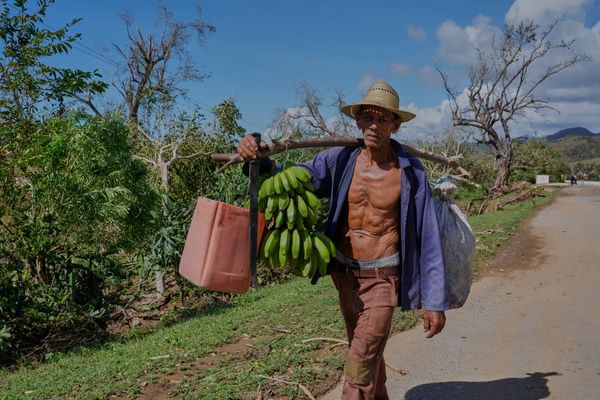
Though they grace the pictures of children’s books and appear in nursery rhymes, the UK’s traditional pig breeds are at risk of dying out.
With the pig market failure causing a shrinkage of the British pork industry, owing to farmers being offered less than the cost of production for their products, the UK pig population has fallen from about 8 million in the 1990s to just over 5 million today.
There is now even less incentive to keep classic breeds, which are already more expensive to rear.
According to the Rare Breeds Survival Trust (RBST), which publishes its new watchlist on Thursday, the situation for UK native breeds is “worrying”.
The Oxford Sandy & Black pig is instantly recognisable to anyone who has grown up in the UK. Also known as the plum pudding pig, it has distinctive spots and is often illustrated in children’s books. The list shows that the number of dams producing pedigree progeny has fallen 32% since 2020.

The pink British Landrace pig breed was already in the RBST watchlist’s most urgent priority category, and has seen a dramatic decline with just 23 dams producing pedigree progeny in 2022, down from 43 in 2021. This compares with 495 dams registered in 2006.
The RBST chief executive, Christopher Price, said: “The British Landrace is in a particularly worrying situation. It is a fantastic breed for really high quality bacon and pork production, very easy to manage and excellent for improving other breeds of pig. But it is not as well known as some of our other native pig breeds. We are working with the British Pig Association and the small but dedicated community of British Landrace keepers to make sure the breed’s excellent attributes aren’t overlooked, as well as ramping up support for conservation and breeding programmes.”
The list shows that other native pig breeds, including the British Saddleback, Gloucestershire Old Spot and Middle White, are breeding less.
Price added: “The crisis in the pig industry over the past two years is driving a very worrying and worsening situation for several of our rare native breeds. Fewer people are keeping these breeds now, and the number of new piglet births is falling too. Each of these breeds has unique characteristics. They are part of the UK’s heritage but they also have an important role in food production today and the resilience of our pig industry into the future.
“We are asking government to consider the urgent plight of native breeds as it reviews the pork supply chain, and every single person who chooses native breed produce in a restaurant or at a butcher’s will be making a real contribution to saving these irreplaceable rare breeds, by supporting the farmers and smallholders working hard to keep and grow their rare breed herds.”
Other at-risk breeds on the watchlist include Eriskay ponies, for which only three foals were registered in 2022; Gloucester cattle, which have seen another drop in the number of breeders and the number of registered births; and rare poultry breeds, with high costs and avian flu restrictions reducing breeding programmes.







